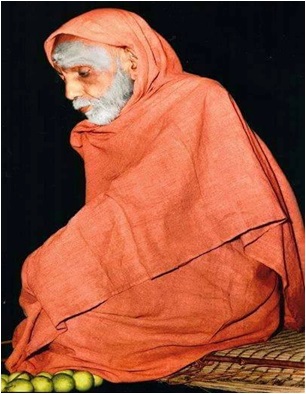124th Birth Anniversary of Poojya Maha Periyava on 20th May 2017
Swaminathan, as the pontiff Sri Chandrasekharendra Saraswathi was known in childhood, was born on
May 20, 1894 in Villuppuram town and at the very young age of
13, he became the 68th pontiff of Kanchi Mutt on February 13, 1907 following the unexpected demise of the 67th pontiff at the age of 18. He was intensively educated by the Mutt’s
pundits in both religious and secular knowledge. He could converse in English,
French, Swedish and a dozen Indian languages.
During his tenure, he travelled by foot almost all
places in India spreading the message of Vedic culture – the backbone of
Hinduism. Periyava once expressed to
his devotees that ‘it is my ardent wish that every locality, every street
should have a center for teaching the Vedas and the boys, from their eighth
year onwards, must be put through the discipline of recitation for an hour a
day for ten years. Preserving the pristine tradition of the exalted Vedic
chants enshrined in the lineage dedicated to the Vedas, for the sake of the
well-being of not only Hindus of all castes and denominations, not only Indians
of all faiths, but for the sake of all mankind in the world over.’
His Holiness, Sri Chandrasekharendra Saraswathi, the Sankaracharya of Kanchi Kamakoti Peetam in South India,
passed away in Kanchipuram, Tamil Nadu, on Saturday, January 8th, 1994, on his 99th year - just four months before he
was due to complete his centenary. The end of the 68th pontiff of the Kanchi Mutt came suddenly at 2:58 pm as he
was relaxing in his room within the mutt.
His mortal remains were buried in
the Kanchi Mutt premises itself and this was the first time a
pontiff’s body was buried inside the mutt. The saint was
lowered with the chair in which his body was kept into a specially woven bamboo
basket and ensconced in a ten-foot pit filled with salt, sandal powder, flowers
and medicinal herbs. The exalted danda [staff], which the sage so gloriously held aloft for the
best part of a century, was snapped into three pieces; one was placed on the
head and two alongside the sacred frame.
Befitting memorial
for Maha Periyava was constructed at Orikkai – about 5 kms from Kanchipuram on the Uthiramerur Road and it was
christened as the Satabdhi Manimantapam wherein Maha Periya’s Sacred Padukas are kept apart from
a granite statue of the holy saint.
The Satabdhi Manimantapam is an all-granite
marvel in sculpture, incorporating the best of Chola, Nayaka and Pallava traditions. It
has four main hallways called the Maha Mantapam, Praja Mantapam, Prakara Mantapam and Paduka Mantapam and they are supported by 101 magnificently carved pillars.
The outer walls of the inner prakara and the inner walls of the outer prakara depict the life and work of our venerable Maha Periyava. Many important events in the life of the Sage of Kanchi are thus depicted, providing a
lively presentation of the multifaceted personality of His Holiness and also
chronicling His manifold activities and achievements almost non-stop, for 87
years in the cause of Sanatana Dharma and world peace.
His foreign
devotees had planned to construct a suitable memorable memorial for Periyava in Flemington,
New Jersey – a 10 acres property approved for House of Worship.
His Holiness Mahaperiyava was embodiment of
simplicity, highly intellectual, most benevolent and above all ever ready to
bless all devotees in order to redress their grievances. His blissful and ever
godly eyes had made powerful impacts on many devotees whose miseries had evaporated
just like ice melting under the sun light.
Hara Hara Sankara! Jaya Jaya Sankara!






Comments